Suchergebnisse
Photovoltaics in the energy system of tomorrow
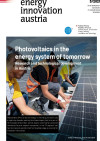
Research and technological development in Austria
energy innovation austria
3/2021
Herausgeber: BMK in cooperation with the Climate and Energy Fund
Englisch, 12 Seiten
Downloads zur Publikation
Facade-Integrated Thermal Solar Installations
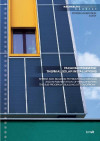
System and building physics fundamentals and implementatio of results within the subprogram "Building of Tomorrow"
Forschungsforum
3/2001
Herausgeber: BMVIT
Englisch, 6 Seiten
Downloads zur Publikation
Green Biorefinery - Separation of Lactic Acid from Grass Silage Juice (Brown Juice)
Development of a technical process to separate lactic acid from Brown Juice. Lactic acid is a promising chemical commodity which may be produced from silage juice at low costs and in an environmentally friendly way for subsequent synthesis of valuable products.
Social Acceptance Of Wind Power In Austria
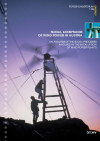
An analysis of the social processes involved in the installatio of wind power plants
Forschungsforum
1/1999
Herausgeber: BMVIT
Englisch, 6 Seiten
Downloads zur Publikation
Distributed power generation and intelligent networks
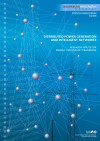
Research inputs for energy systems of tomorrow
Forschungsforum
5/2006
Herausgeber: BMVIT
Englisch, 6 Seiten
Downloads zur Publikation
IEA Bioenergy Task 40: Deployment of biobased value chains (Working period 2022 - 2024)
Bioenergy Task 40 traditionally focused on international trade and supply chains of biomass for bioenergy. Starting in 2018, the systems view was broadened, also to better meet Austrian requirements. The supply chain focus was maintained, but with a broader premise: The establishment of bio-based value chains for a sustainable and fair bioeconomy.
Feeding Biogas Into The Austrian Natural Gas Grid
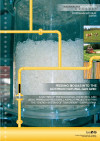
Analyses of technological, economic, and legal prerequisites as well as pilot projects within the "energy systems of tomorrow” subprogram
Forschungsforum
2/2006
Herausgeber: BMVIT
Englisch, 6 Seiten
Downloads zur Publikation
Technology development for sustainable buildings
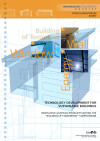
Innovative Austrian Products within the "Building of Tomorrow" Subprogram
Forschungsforum
3/2007
Herausgeber: BMVIT
Englisch, 6 Seiten
Downloads zur Publikation
Smart Grids Projects in Austrian R&D Programmes 2003-2010

This publication presents results of projects within the subject area "Smart Grids" in Austrian R&D Programmes 2003-2010. The participating research institutes and companies have achieved many remarkable and internationally acknowledged results.
Photovoltaics - a key technology
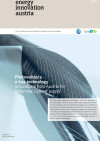
Innovations from Austria for tomorrow`s power supply
energy innovation austria
2/2017
Herausgeber: BMVIT und Klima- und Energiefonds
Englisch, 8 Seiten
Downloads zur Publikation
SUPOSS - Sustainable Power Supply for Supermarkets and Surroundings
Developing technical and business concepts and strategies for a sustainable power supply of supermarkets and local consumers - supply of heat, electric power and cooling energy on the basis of solar energy and solid biomass.
Optimization of methane production - the Methane Energy Value Model
The biogas production from energy crops will be analyzed and optimized. Energy crops are grown in an environmentally friendly and sustainable crop rotation system. The project provides a secure basis of data for the biogas production and utilisation. Farmers will invest more into the biogas technology.
Solar thermal cooling system consisting of a parabolic trough collector field and a steam jet ejector chiller
A solar thermal cooling system consisting of a parabolic trough collector field and a steam jet ejector chiller has been developed. The necessary components were built and tested and finally put together to get an operating pilot plant at the test facility.
OPTISOL - Demonstration objects accompanied by measurement techniques for optimised and standardised solar systems in the construction of residential buildings for several families

The implementation of optimised solar heat supply systems in the construction of residential buildings for several families within the framework of an in-depth test.
Development of agitation systems in biogas plants in order to optimize mixing-behaviour and to reduce energy demand with the help of Computational Fluid Dynamics (CFD) simulation
The purpose of this project is the investigation of the mixing-behaviour and performance of the agitation systems in biogas plants, and to present them through Computational Fluid Dynamics (CFD) simulation. This EDP-tool can model and predict the actual fluid dynamics in a closed system. Thus it may help to plan optimal reactor geometries, position and combination of agitation systems as well as to minimize the energy requirements.
Information point for renewable and ecological materials (II) online information plus service offer

Development and maintainance of the internet platform for building materials made of renewable resources at www.nawaro.com, which serves the central information-point for important stake holders - private house builders, architects, master-builders and experts in the field of building laws.
The "Schiestlhaus" In The Hochschwab Region - Alpine Refuge Using Passive House Technology
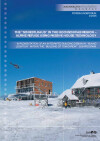
Implemantation of an integrated building design in "Island Location" within the "Buildng of Tomorrow" subprogram
Forschungsforum
2/2005
Herausgeber: BMVIT
Deutsch, 6 Seiten
Downloads zur Publikation
User Behavior And Evaluation Of Sustainable Concepts Of Residentia Buildings

A Focus within the "HAUS DER ZUKUNFT" Subprogram
Forschungsforum
4/2001
Herausgeber: BMVIT
Englisch, 6 Seiten
Downloads zur Publikation
PROMISE - Production with solar energy. Study on the potential of thermal solar energy systems in trade and industry depending on the production processes
Documentation of realized plants for the use of thermal solar energy in trade and industry companies. Identification of production processes and branches, which have a demand for low-temperature heat. Determine the potential of solarthermal systems to provide low-temperature heat. Case studies for branches and processes with the highest mid-term potential for realization of a solar plant.
Booklet issued by Building of Tomorrow with about 20 practical passive house thermal bridges free connection details for large-volume residential buildings
In particular, for buildings with very low energy consumption on heating the influence of heat bridges have a special value. Since in passive house construction a largely heat bridge free execution is required, the most frequent and significant heat bridges are collected in a booklet.
